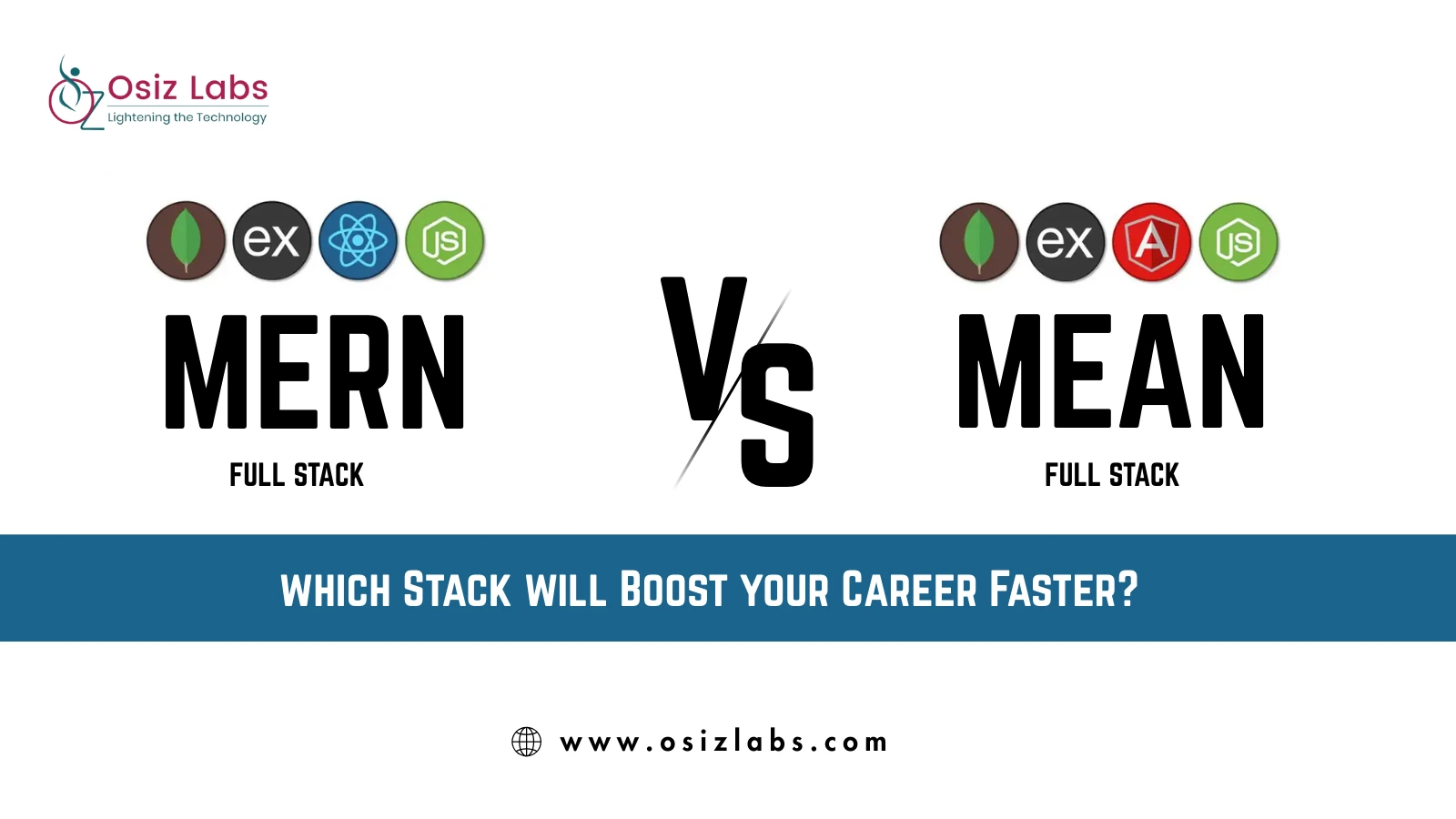Career
MEAN vs MERN in 2025: Which Stack Will Boost Your Career Faster?
This blog compares MEAN and MERN stacks for 2025 to help you choose the right full-stack development path. Explore the key differences, career opportunities, learning paths, and real-time industry demand to make a confident decision for your tech career.
Enquire Now
In 2025, one of the common questions raised among students is which full-stack to choose between MEAN and MERN. Full-stack development has become the most highly pursued career path in the tech industry, offering great opportunities, skill sets, and high-paying jobs. This blog will help you find which path aligns with your interests and the latest trends and guide you toward a clear career direction.
MEAN and MERN
What is MEAN Stack?
MEAN (MongoDB, Express.js, Angular, and Node.js) is a stack of JavaScript tools that help build websites and mobile apps. MEAN works under a structure called MVC, which stands for Model-View-Controller. It organizes code in three areas: the Model (which handles data), the View (user interface), and the Controller (which connects both). Angular handles the front-end and data flow between the screen and the code, which is useful for building large, complex apps and making app development faster and easier..
What is MERN Stack?
MERN stands for (MongoDB, Express.js, React, and Node.js). Like MEAN, it’s also a stack of JavaScript tools that help build websites and mobile apps. MERN uses React for the front-end, which works with a component-based structure and a one-way data flow that manages data better and makes the user interface run smoothly. MERN follows a three-layered architecture to run apps faster, update in real-time, and provide a dynamic experience for users. Since it uses JavaScript and JSON, developers can work on both the front-end and back-end using the same language, making the development process more efficient.
DIFFERENCE BETWEEN MERN AND MEAN
The prominent difference between MEAN and MERN is how the front-end is handled in each stack. Angular in MEAN follows a fixed structure with a complete framework and built-in tools. MEAN is great for building enterprise-level apps, but it takes time to learn compared to React.
Whereas React in MERN is a JavaScript library and more beginner-friendly to learn, with less complexity, more optimized, and flexible when building interactive and well-designed user interfaces.
CAREER GROWTH AND SALARY
- MEAN and MERN stacks are in-demand skills across many industries. Current trends show that React is gaining more popularity than Angular, with higher download rates and rising global attention. MERN is a popular choice among startups and companies that build faster, user-friendly applications. As a result, developers skilled in MERN often see more career opportunities and salary growth, especially in product-based environments.
- MEAN, on the other hand, is increasing in large-scale enterprise systems with Angular’s structured framework. For beginners, both stacks offer similar starting points, but MERN is more flexible and relevant in today’s fast-changing tech landscape.
- On average, MERN and MEAN stack developers in India earn between ₹5 to ₹8 LPA, depending on experience and skills. Entry-level positions usually start around ₹4 to ₹5 LPA, while experienced developers can earn well over ₹12 LPA. Both MEAN & MERN stacks offer strong salary growth with real-world project experience and upskilling.
MERN vs MEAN: Which One to Choose?
1. For Freshers and Graduates:
If you're starting your tech career, MERN would be the right choice. MERN simplifies the development process, which is easier to learn and allows you to build quick, responsive, and interactive user interfaces without the need to learn a heavy framework. MERN is used widely in startups and modern web projects, so gaining skills in this stack brings more opportunities for entry-level positions. There are plenty of online resources, community support, and real-world project models that help to build confidence and land your first job in IT more effectively.
2. For Developers in Enterprises:
MEAN is better suited for building structured, large-scale applications. Its structured framework approach makes it a good fit for enterprise environments. From a career point of view, those specializing in MEAN gain great opportunities to work in government projects, large IT companies, or multinational corporations that build large-scale applications. MEAN stack positions require more architectural knowledge while ensuring long-term job security within organizations.
FULL STACK LEARNING PATH
- Learning full-stack development takes 3 to 6 months based on the course structure and hands-on experience. MERN-focused courses, especially those involving real-world projects, often lead to faster job placement. While the duration of MEAN stack learning may take slightly longer due to Angular’s complexity, learners gain a solid foundation in building scalable, enterprise-level applications.
- Both MEAN and MERN are equally in demand and excel in career opportunities. Mastering either stack can lead to career growth. Focus on building strong fundamentals, stay updated with current trends, and choose a learning path that aligns with the type of developer you want to be in today’s fast-evolving tech world.
Why Osiz Labs is the Right Place to Learn MERN & MEAN?
If you're looking to start your full-stack career with the right support and guidance, Osiz Labs offers training in both MERN and MEAN stacks. You’ll learn to code, innovate, and build real-world applications with the help of IT experts. The course includes a structured curriculum, online & offline classes, and real-time projects, all at an affordable cost. We provide 100% placement support and the flexibility to learn anytime, anywhere. We make your journey to becoming a full-stack developer easier.

Need Career Guidance
Book Now
